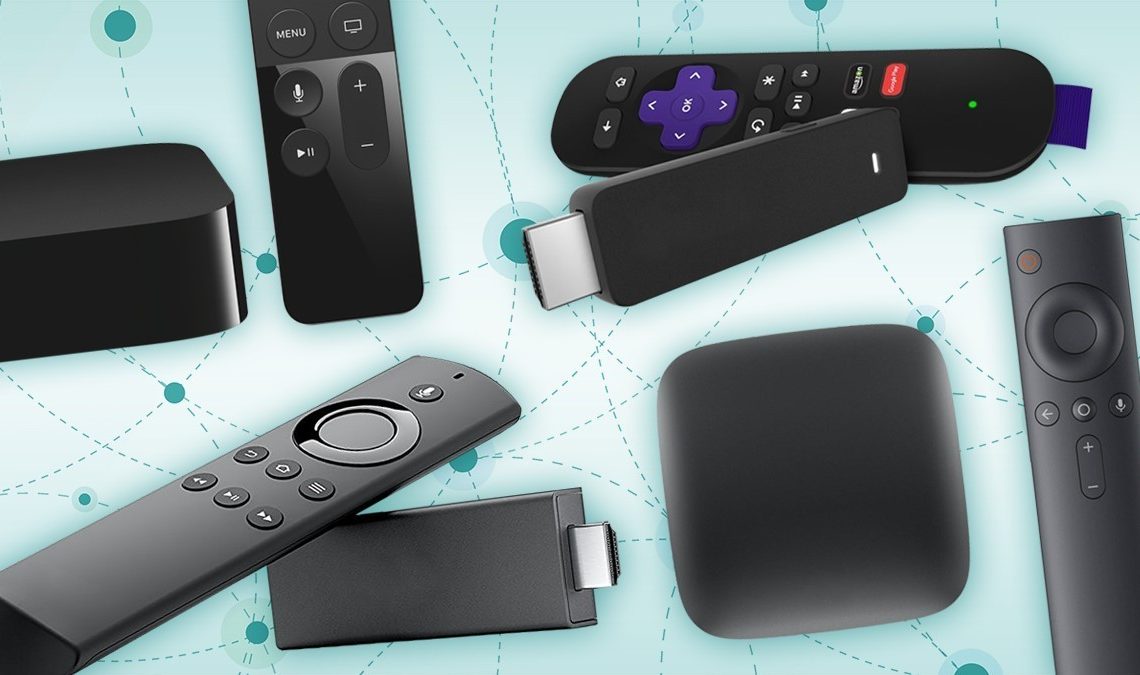
Nope, you don’t have to settle for the streaming apps on your smart TV. If you’re looking for a better video-streaming experience, you can scoop up a streaming player from the likes of Apple, Amazon, Roku, Google, and others. Just plug the player into TV’s HDMI port, and you’ll be able to use apps like Netflix and Hulu, possibly with a faster and smoother experience than your TV’s built-in software.
The good news about streaming media players is that there’s a wide range of devices to choose from. The bad news? All those streaming choices can be a bit overwhelming. Should you grab a $20 streaming stick from Roku, or cough up more than $100 for a feature-packed Apple TV? There’s also a bewildering number of choices in between, from Amazon’s 4K Fire TV players to the Google TV Streamer, which doubles as a smart hub.
Never fear. We’ve spent hundreds of hours testing the top streaming players from all the big manufacturers, including Apple, Amazon, Roku, Google, and more, and we have device recommendations for every budget.
Amazon’s Fire TV Stick, Fire TV Stick 4K, and Fire TV Stick 4K Max are all strong values, especially when they’re on sale, but their menu systems are difficult to navigate and bogged down by advertising; the Fire TV Stick Lite should be avoided by pretty much everyone; the Roku Ultra may appeal to Roku fans who want ethernet connectivity, USB media playback, and Bluetooth; the speedy and feature-packed Nvidia Shield TV and Shield TV Pro have devoted fanbases, but for most folks, we hesitate to recommend a device that is now more than five years old; the high-end Google TV Streamer does little to distinguish itself from cheaper options; and the TiVo Stream 4K is no longer worth considering as TiVo focuses more on smart TV software now.
Picking the right streaming player involves more than just comparing prices. Here are the top features to look for when shopping for a streaming device.
Pretty much all streaming players today output video in two basic formats: HD (720p or 1080p) or 4K, with budget streaming devices usually restricted to HD-only quality. If you only have a 720p or 1080p-capable TV, save your money and stick with an HD-quality streaming player. Have a 4K TV? If so, you’ll want a 4K streaming device to take advantage of your TV’s 4K panel.
HDR, short for “high dynamic range,” is a feature that boosts the difference between the darkest parts of the image and the brightest, good for making the image really pop. HDR10 is the garden-variety version of HDR, while two other enhanced versions—HDR10+ (an open-source HDR format favored by Samsung) and Dolby Vision (Dolby’s proprietary HDR format) up the ante with scene-by-scene and even frame-by-frame HDR grading. The short version is that HDR is good, HDR10+ and Dolby Vision are better.
If your TV supports some or all of these HDR formats, look for a streamer that matches your TV’s HDR capabilities. Budget 4K streamers can generally only handle HDR10, while pricier models will do either Dolby Atmos or HDR10+, or perhaps even both.
Besides Dolby Vision, many streaming devices also support Dolby Atmos, and “object-based” audio format that can—with a compatible TV or A/V receiver—put you in an immersive bubble of sound. Budget streaming players often won’t decode Dolby Atmos streams on their own. That said, be sure to read the fine print; some of Roku’s cheapest streamers, for example, offer Dolby Atmos passthrough, meaning they can pass along the Atmos signal to an Atmos-compatible A/V component.
Streaming players come with a variety of storage options, ranging anywhere from 8GB or so to 128GB and up. Storage comes into play when it comes to streaming apps; the more storage you have, the more streaming apps you can install. Most streaming apps are so small that even a meager 8GB may be enough. But if you want to install lots of apps or even games on your streaming player (the Apple TV 4K has a robust gaming library, for example), the more storage, the better.
Hate buffering? Then pay attention to connectivity when shopping for a streaming player. Dual-band 2.4/5GHz Wi-Fi is essential when it comes to smooth 4K streaming. Wired is even better, and the best streaming players will have wired ethernet connections.
There are four basic platforms when it comes to streaming players: Amazon’s Fire TV, Apple’s tvOS, Google TV, and Roku OS. All have their pluses and minuses, and the selection of apps for one streaming platform may differ from that of another. More importantly, some streaming platforms may be more—or less—compatible with the devices you have at home. If you’re an Apple household, for example, and Apple TV 4K will work well alongside your iPhones and Macs, while a Google TV will be better suited to Android devices.
While most streaming players can be controlled with an app, a remote is easier to use when lounging on the sofa. The best streaming remotes will have backlit keys, and voice control lets you search for shows using voice commands. We also like remote finders that help you locate stray remote controls that have slipped between sofa cushions.
Author: Jared Newman
Source: PCWorld
Reviewed By: Editorial Team



